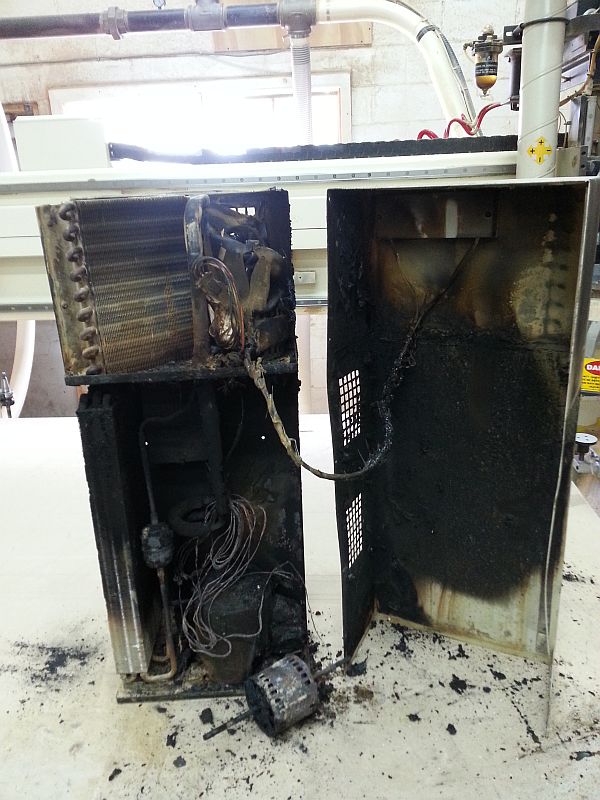Question
I run a router shop for a boat builder here in Maine. Just replaced the worn pulleys and belts on both the X and Y axis on the machine as a matter of routine maintenance. No problem in machining prompted this, just noticeable wear on the pulleys. Having replaced these I now can not get the machine to repeat proven router programs involving routing any radius without error. For example, the task of routing a 1/4" deep dado in cherry, programmed for two equal depth passes with a 1/8" bit, yields very visible "shoulders" between the first pass and the second, yielding almost a 1/4" dado in extremes and, furthermore, a shoulder on the ID at the start and the OD of the end of the radius rout. Previous to the pulley/belt change, no problem. I have checked backlash on X and Y with a dial gauge and it is within a half a thou in an inch, so that is not an issue. Andi Stratos, new in 98, with Fanuc controller. Any ideas? Andi and my tech are puzzled and I need to get her up and running.
Forum Responses
(CNC Forum)
From contributor M:
For my benefit, please define what you meant by "worn" pulleys? Worn belts are typically defined by cracks, frays, damaged teeth or loss of elasticity.
To me, backlash may be present, but would have been a graduating presence for some time. Perhaps the combination of the belt/pulley change could have made an already existing issue more pronounced, but to me that is a rare occurrence.
Other considerations:
1.) Is the lack of repetition consistent? Always occurs in one direction or always occurs a specific amount?
2.) Have you removed all covers from the associated pulleys/belts and physically watched them run at both rapid and cutting feed rates? I would look for noticeable run out. The pulley would seem to run with a wobble or as if it is eccentric if there was a problem with the mounting. The belt will ride to one side or slide back and forth over the pulley if mounted incorrectly. Any of the above are not desirable, as they increase the chance of you jumping teeth on the pulley belt.
3.) Did you tension the belts upon replacement with a tensioning gage? I know this may seem basic, but I always tend to start with the point of last known human intervention.
1. Aluminum pulleys had teeth that had worn to a sharp edge as opposed to the new pulleys, which have a flat on the top of the teeth. Old belts showed very little wear, but were replaced with new as a matter of preventative maintenance.
2. The lack of repetition is in fact consistent and does appear to happen very close to the transition from + to - on both the X and Y axis, regardless of the program run. The deviation of the cut does also appear consistent.
3. All covers are removed and operation observed numerous times at both normal speed and at 25% of normal rout speed. Results of rout are the same regardless. No visible wobble of pulley or movement of belts on pulleys from side to side.
4. Alas, I did not use a tensioning gauge when installing the belts, other than a 2' bar and my shoulder. The belts are very tight, have little deflection and could be said to "sing" when plucked. I know that's not quantitative, but that's the situation.
A two foot bar and your shoulder and belts that sing sets alarm bells ringing for me. This could be a case of overloaded servos and bearings that are finding it hard to interpolate smoothly on the circles when synchronized axes movements are important. Try backing off the tension and putting very little pressure on the bracket motor, etc. when tightening bolts, and run the machine at low feed rates to see if the problem returns. The belts can get by with a lot less tension than you might think and slight deflection with finger pressure would be okay, as the teeth do the driving and not the tension.
Also, this might sound silly at this stage, but are the pulleys and belts the same pitch, i.e. not metric and inch mixed together? 6mm to 1/4 and 8mm to 5/16. Ya never know.
